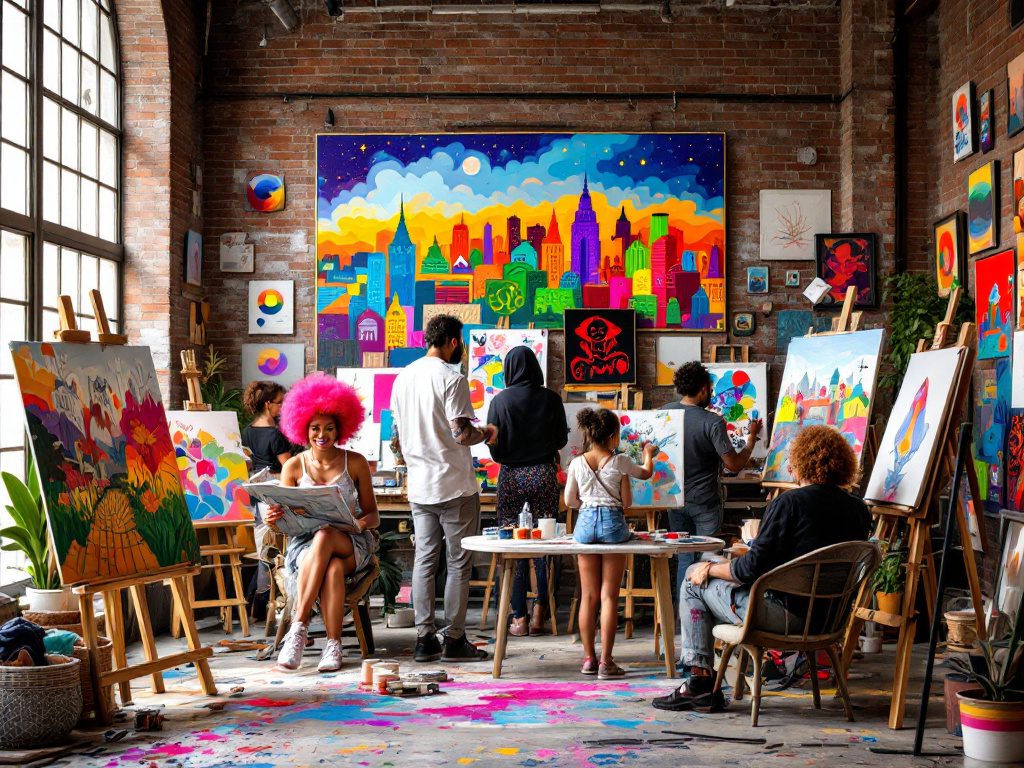When the Lights Dimmed, Communities Stepped Up
Imagine a city where the once-bustling hum of creative activity quiets overnight. Gallery doors lock, community art classes vanish, murals go unfinished. That’s not a speculative dystopia—it’s a reality America came perilously close to in the wake of drastic federal arts funding cuts during the Trump administration. National treasures like the National Endowment for the Humanities (NEH), the National Endowment for the Arts (NEA), and the Institute of Museum and Library Services (IMLS) saw their lifeblood slashed. The IMLS in Washington, D.C., was hit so hard that its doors were shuttered and its team sent home for an uncertain 90-day paid leave. For the art world—long the soul of our communities—these cuts weren’t merely budget lines. They threatened narratives, erased local history, and muted voices that, too often, already struggle for a platform.
Yet, against this backdrop of shrinkage, something profound happened. Local foundations, nonprofits, and everyday citizens refused to let the lights go out. While Washington wavered, people acted. According to Americans for the Arts, 2021 saw individual donors, private foundations, and regional coalitions step in to provide lifelines, with a 7% increase in local giving to community arts initiatives over the prior year—a testament to Americans’ belief that the arts matter even, or especially, when government support falters.
Creativity Flourishing in Adversity: Stories from the Front Lines
Take the mural initiative recently launched in Oklahoma. Artist Wesley Luster didn’t just teach technique—he taught resilience. Partnering with a local boxing gym, Luster invited youth, many of whom had never held a paintbrush, to create their city’s first community mural. The theme? Heritage—an intentional choice celebrating diversity and personal stories. Rather than imposing a single narrative, every participant found space to see themselves reflected in strokes of bold color. The process, supported by a modest grant from the Oklahoma Visual Arts Coalition, did more than beautify a wall; it strengthened self-worth and fostered leaders. As one teen, freshly spattered with paint, said: “I never thought people would care what I had to say on a wall. Now I know my story matters.”
The mural’s power wasn’t accidental. When young people are confronted with social and economic challenges—like poverty, policing, or lack of recreational outlets—art becomes both a shield and a sword. Harvard psychologist Dr. Julie B. Yip-Williams notes that community arts involvement is strongly correlated with improved mental health, increased civic responsibility, and a drop in risky behaviors. This local project mirrors a broader trend: when institutional supports dwindle, grassroots efforts provide not just a safety net, but a springboard.
“When politicians turn their backs on creative expression, local champions become the keepers of culture—and their impact is anything but small.”
Nationally, we see echoes of this courage in Miami, where Miami Dade College (MDC) continues to drive the region’s cultural growth despite hostile funding conditions. The 42nd Miami Film Festival—organized by MDC—welcomed more than 200 films from 45 countries and premiered 34 new works. Audiences filled Miami’s Olympia Theater, proof that the appetite for creative storytelling remains insatiable. But it’s not just global stories gracing the screen. MDC’s latest innovation, ‘The Louies,’ supports homegrown filmmakers chronicling untold chapters of South Florida’s history. These investments are not just about art—they’re about memory, representation, and resilience.
A Future Built on Inclusion—and Grit
When sweeping federal changes threaten the arts, it’s rarely the established, well-funded institutions that pay the heaviest price. Instead, the burden falls on small, community-oriented organizations—especially those uplifting women, LGBTQ people, immigrants, and communities of color. According to the National Humanities Alliance, post-2018’s sharpest cuts forced up to 80% of NEH support staff out, while numerous smaller nonprofits shuttered entirely or barely survived through patchwork grants and local fundraising drives.
Solutions sprout where official policy withers. In Miami, MDC’s Museum of Art and Design offers free family art workshops, while Live Arts Miami brings world-class performance to new audiences across the city. The Koubek Center provides an essential gathering spot for Spanish-speaking residents, fostering cross-generational exchange and cultural pride. Each of these efforts—often reliant on volunteers and small donations—serves as a bulwark against the erasure of identity and memory that can result from anemic federal backing.
A closer look reveals a broader lesson. The arts aren’t luxuries for rarefied elites. They’re public goods—drivers of civic engagement, empathy, and local prosperity. Every mural painted, every chorus sung, every festival organized is an act of defiance against those who would narrow the public square. Sociologist Dr. Elizabeth Currid-Halkett has documented the measurable impacts of a healthy arts ecosystem: stronger community bonds, more vibrant economies, and a fighting chance for those most often pushed to the margins.
Want to make a real difference? Individual action matters. Donate to a neighborhood arts center. Buy a ticket to a student play or a painting from an emerging artist. Vote for candidates who pledge to restore robust, equitable funding for cultural programs—because, as history has shown time and again, when the arts are endangered, democracy itself is more fragile.
Arts Survive—And Thrive—On Community Commitment
The Trump-era cuts were a gut punch to the creative sector, but the response from local organizers, educators, and engaged citizens reveals a simple truth: Our cultural life endures because ordinary people refuse to let it die. This is the grit that built the WPA murals of the Great Depression, the jazz clubs that weathered segregationist bans, and the LGBTQ theaters that survived in the midst of AIDS hysteria. Today’s fight—fueled by small donations, robust advocacy, and sheer creative stubbornness—stands firmly in that tradition.
Will Congress restore funding to the NEA and its sister organizations? Will state and local leaders realize that to starve the arts is to starve the soul of their communities? That remains a live political debate, with real consequences this election season. Until then, the work goes on. The next time you pass a vivid new mural in your city, remember whose hands made it possible—and ask yourself: What story might you help paint?

